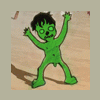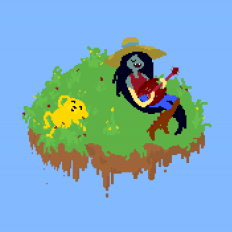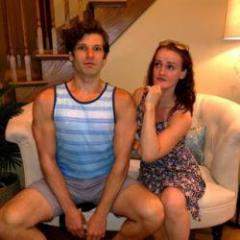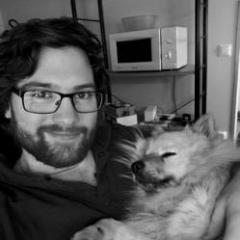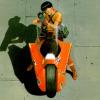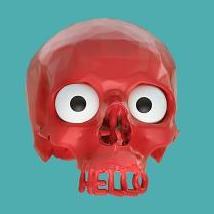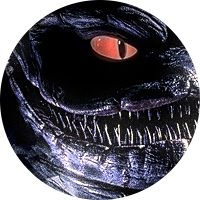Search the Community
Showing results for tags 'workflow'.
-
Sorry for this noob question. I got 3DCoat recently, as its texture painting feature looks very promising. And I did find myself like it more than Blender or Substance Painter. But so far, while I'm getting more used to Paint Room, the rest of 3DCoat is a mystery for me. Why are there Retopo/Tweak/Modeling rooms? Are they all for editing the low poly model? If Retopo Room is for low-poly and Sculpt Room is for voxel, which rooms should I be in if I'd like to work on a high-poly (like 1~2 millions of polygons) model? I just have so many questions. Could someone briefly explain which room does what, and what the workflow looks like if I want to do some traditional poly-modeling?
-
Hi! So, I've been struggling for some time now. I'm making characters in DAZ and I want to import one into 3DC and to be specific: I want to get him into the scene and then slize his face off. What's the exact workflow here? Wich room do I import him into? Wich settings? Can you keep the maps while doing this? Wich tool do I use to cut a part of him away? Is it possible to export this guy with the MTL file still intact to render in other software? I want to get him back into DAZ for rendering! Right now I'm drag/dropping him into 3DC, choose import for per-pixel painting, but when I press Sculpt he disappears. And in the other rooms i can't find a function like "Cut off" in the sculpt room. When I pick import for vertex painting/big reference his maps look super weird, like low-res or something.
-
Retopology tools Vs Modo/Maya how do they compare?
Rectro posted a topic in CG & Hardware Discussion
Hi Im a Modo, and C4D user and looking at the nice tools Maya has for topology. Some spesific ones that caught my attention is Smooth brush from the shift modifier key along with soft selection. What solutions does 3Dcoat have for retopology smoothing, and how does in general they compare with Maya. I use Zbrush so dont even need the sculpting part of 3DCoat. Here is a video I made to make my question more clear. Thanks, Dan -
Can you tell me, why we got metallness parameter in specular/gloss workflow? I really dont understand!
- 1 reply
-
- metallness
- workflow
-
(and 2 more)
Tagged with:
-
I love the reference plane and how it can be set up to lock in place. However, the current model I'm building only has a 45 degree view reference artwork available. Is it possible to rotate the reference plane to other angles that the standard 90 degrees? Kind regards, Peter Spence Putty Studios Characters and Visual Effects www.PuttyStudios.com
- 3 replies
-
- ui
- reference plane
-
(and 1 more)
Tagged with:
-
I`m moving between applications in my workflow (sculpt in 3D-coat, paint in Substance Painter). I have heard that the following is possible, though I`m unsure how exactly. I want to : 1. Import a mesh (originally sculpted in 3D-coat, but textures are generated in Substance Painter) 2. Import multiple texture sets for said mesh (from Substance Painter: they all belong on the one mesh, but for different "parts", and therefore needs to be merged since it can`t be done that way in Substance Painter) 3. Somehow combine the textures into a single UV-tile (that can later be applied to the mesh inside of e.g. Maya). 4. Export (... the newly combined texture as a single file.)
-
Hi guys, so I know this is probably a newbie thing but Ive been trying to figure it out on my own this morning and I couldnt. So I got a model in zbrush with a 4 subdivision levels and good topology, made it on zbrush, but next projects ill be using 3ds max too. In 3DC i want to: UVs on the lowpoly baking a displacement map from the highpoly Paint textures while I can see the displacement map applied (i dont know actually if that is possible, if not ill go with normal map) What Ive done: Exporting obj lowpoly, exporting obj highpoly and try things.
-
I'm trying to unwrap a UV of my model so that I can bake it and bring it into Maya. But I'm not sure of the process needed to do this. Any help would be appreciated Thanks
-
Like the topic suggests this post is about brush size being linked to Depth strength. Is there a way to turn this off in 3dCoat? It's been this way for as long as I can remember and for the life of me I don't know why it was conceived this way. I have up until now merely put up with it but I can't stand it any longer. Why is it this way by default and can we get it changed? This program is for the most part great and is like a swiss army knife of tools but a LOT of them are ill conceived and poorly implemented. I have posted many comments over the years complaining about a lot of them and Andrew (god bless him) has answered most of them and when he doesn't it's because he's been too busy. Sorry for the slightly ranty post but it's been bugging me for too long.
-
Hi everyone! I'm new to 3DCoat, and in 3D art in general, and I'm looking for a good workflow. I've already worked several times in Blender, creating very low poly meshes, and I've sculpted high res meshes in ZBrush and I'm now starting with 3DCoat! I can do a blockout for a weapon or a base mesh for a character, and I've found no problems in importing the second in surface sculpt mode, subdiving/voxelizing it and sculpting the details. Ridiculously, I'm having more issues with the hard surface. The most common workflow in the world is creating a basic geometry in Maya/Blender and importing it in ZBrush/3DCoat, subdiving it, and sculpting details on the surface. I do like creating blockouts in Blender - mostly because I can control very, very good every face, vertex, and edge. Being a newbie to the software and having seen some videos around, my questions are: - Which workflow do you reccomend in general, or for a specific task like character/hardsurface and why? Do you use a blockout made in Blender/Maya/Etc or do you sculpt directly with voxels? - Does the voxel sculpt mode some particular cons? How good is the control over an hard shape/surfacem how does it feel? Would you compare it to an absolute, precise control like the one you have when you block out? - Does voxel sculpting give particular problems when it comes to retopology? Most people use a blockout to have a retopology mesh almost ready (never made a retopo before, so sorry for the ignorance about the topic)! Well, that's all for now (I've few other super-nooby questions to be honest, but they'll be for later)! All of this came because I've noticed that in voxel mode you can make crazy details with lightspeed and with great freedom, but also that if I import a blockout mesh and voxelize it, instead of starting with a voxel mesh, it'll create annoying voxely artifacts (apparently, 99% on inclined edges) that I can't make go away with Res+ and I don't know how to polish! I'm also wondering if it makes sense to NOT use voxel mode, considering the great advantages it offers even on a dynamesh... but to know that, I must wait for your response! Thanks to everyone in advantage for the help, I promise I'll annoy you more with silly questions on geometry and sculpting soon!
-
I made this because i didnt want to figure this out over and over again, so i condensed my findings into an info-graphic and posted it online for everyone. All the info below is copied into the info-graphic, and its all you need. If you want to see some of my 3d coat work check out my Artstation: LEDs This shows you a great starting point to translate 3D-Coat textures over to the Cinema 4D Arnold render. I attempted to Contain all the information you need in the info graphic. I think its important to point out that 3d coats painting is focused on the game engine style official "PBR" algorithms. Arnold (and alShaders) aren't build off the exact same "PBR" shading standard and so it will never translate perfectly. However, from an artists perspective, its entirely usable and can get great results. Key Note: PBR generates much of its shading from dynamic reflection probes, HDRs and other cool tricks, most matte materials are still reflective somewhat, but very blurry to simulate light. This means the matte areas of the Arnold material have this quality too, reflections above zero, which is inefficient in the Arnold sampling world and leaves some more grain. A better shader setup is definitely possible with more mixing and more maps output from 3d-coat.
-
Hello, I have a beginners question regarding basic workflow. I do all my modeling in Cinema 4D and at this point, am looking to use 3D Coat for the UV tools (SO GOOD!) and the painting. Basically, I'm just looking for resources/youtubes you may now of that discuss this workflow. For example, I want to know how to get a Normal Map for my object, but most of the tuts I've come across talk about baking a normal from a low poly/high poly mesh created within 3D Coat. At this point, 100% of my modeling will be done outside of 3D Coat, and I'll just be UV'ing and painting. Just curious if anyone else follows this workflow or has any tips for me in regards to preparing the model. Thanks in advance, Kel
-
I am fairly new to using both 3DC and Modo and frankly I am lost. I have textured my item in 3DCoat and no matter what I do, various methods of exporting, etc I still keep getting a model that looks like this now in Modo when trying to render it out. I am not sure if this is a Modo problem or an exporting in 3DC problem but it has taken up two days of work trying to figure out and I am going crazy... If anyone has some insight on this workflow and where I am going wrong I would appreciate the help more than you can imagine!Thanks for looking.
-
Hello! As the title suggests, what is your workflow when sculpting say organics or hardsurface objects in 3D Coat? Main reason I am starting this thread is because I am still struggling finding a workflow I am comfortable with in 3D Coat, I am used to dynamesh workflow to get my base forms, and then retopoing to a subdiv workflow for refinement and details. Which is something I can't reproduce in 3D Coat. So I am curious how other people approach sculpting with this wonderful piece of software. Now yes, I could be using a workflow with voxels or liveclay surface, but, I feel I have no control at all and eventually I have an uncontrollable mess where some areas are superdense and others are lowpoly-esque. I have really tried getting used to it, but I still feel like I am playing with fire. So, fellow 3D Coat'ers... What is your workflow when sculpting?
-
So I retop'd a mesh and I want to be able to bring it back into sculpting so I can refine it a bit more, how is this possible! Please and thank you!!! I've been struggling to do this!
-
Hey guys, I'm super frustrated. I have an .obj with UVs from a 3D scanner I want to clean up and I have taken SO MANY tutorials and every time I think I have found a solution it turns out it can't work in the new 4.5 version as the UI has changed. I did all I can to be a self learner but I'm stuck. Here's my questions... 1. I want to import it into the Voxel room and clean it up with the color already baked in. If I need to carve out an ear... I need to see the UV to know where to cut. What is my order of operations? 2. I've unwrapped the UV in Capturing Reality and it's messy. If I am painting directly on the model does it even matter? And it seems to be importing has voxel model and surface model directly on top of each other and as two parents in the Paint Room. Why is this? 3. When I go to export the final mesh for 3D printing IN SANDSTONE, is it better to export for print or just export the new .obj with baked color? Thanks so much! Bethany
-
Hi guys I really had an idea of creating something for Dota 2 workshop and I decided on a courier. I am familiar with softwares like 3ds max and 3d coat but I am a casual user and i don't understand some parts to do it till the end. Q1: How should character look? Should i split the parts of body of courier (legs, hands etc...) or I keep it as one part? Q2: What is the workflow? Dota 2 courier asks for max 3000 polygons model which is very low. I just don't understand how can you keep the details of the courier, but guys on workshop somehow does. When i try to retopo my high poly model into fewer polygons i just can't menage the details. Q3: I know that you somehow have to apply texture from high poly to low poly mesh but I don't understand how and there is not enough information online? Q4: I want to export model from 3d coat to 3ds max to animate, but when I do that materials dont apeear to be right, how to adjust it inside? I hope you guys can help and others who has similar ideas to create something for workshop can learn, feel free to send any links that might help, but personally I didn't find any real source of info that really explains everything step by step ( for dummies ) Thanks a lot!!!
-
Hi Guys, So I have really been getting in to 3D - Coat over the past week or so and I am trying to transfer some of the workflows I have learnt over the last year to 3D - Coat. One of the most useful workflows I have come across especially for environment art is this: http://pixologic.com/zclassroom/homeroom/lesson/environments-with-tate-mosesian This is a workflow that uses the 2.5D canvas in Zbrush to basically insert meshes in a tileable way to bake your maps from for simple things like floors, walls anything that is tileable really This is probably an old technique and with tools like Substance Designer on the market, kinda makes this workflow redundant, unless you have other methods. Anyway what I would like to know is how can I transfer this over to a solid workflow for 3D - Coat. I have an idea on how to do this but it is a bit of a struggle when you can't do things like focus on the canvas to see your workspace, in 3D - Coat you can't really resize your viewport to a specific size so you never really know what size you are working with, at least I don't anyway. I have messed around with defining the measurements by setting my measurements to cm for UE4 but I don't completely understand how the grid works and if you have grid snapping in 3D - Coat. My thought process for doing something similar to the above workflow from ZClassroom is to sculpt your high detailed objects (bricks, rocks, stone, whatever) and then save them as models so you can use them as presets by saving them into the model folder to use in the Voxel room. Once you have your objects you use the 'Instancer' tool and you can start laying them out around the viewport. This is where my question comes in, how can you be sure that you are working to the correct size you want your texture to be, ready for baking? I guess you can easily make modular environment parts by doing the same method as above and then going to the Retopo room and making a low poly and baking. Is there a way to know what size you are working in whilst instancing your objects? The only thing that comes to my mind is making a 1024 x 1024 plane and instancing your objects over that. I would love to hear other methods to get the same results, would be really cool to share workflows
-
I run into a problem with my export from 3dCoat to Cinema 4d. Seams appear at my island's borders and i don't know what to do about it (you can see it in the very last screenshot below). It probably is a step i haven't took in 3DC (i'm really new to topology & uv stuff so it might a simple mistake on my side). I've made some screenshots about the steps i take to prepare in 3DC and export to C4D. If some C4D users are here & are used to exporting from 3DC to C4D, thanks for confirming (or not) that my workflow is ok. I use 3ds max preset for importing OBJ's in C4D, otherwise UVs are messed up.
-
I'm sure this is a total newb question, and I apologize if the answer is really obvious. I've been watching a few tutorials on UV unwrapping as I try out 3D Coat, and all of them show the workflow for unwrapping as: 1. Import/sculpt the model. 2. Click the UV tab & start the UV unwrapping process. However, this doesn't work for me as I am never able to get to the second step. In multiple different files, when I click the UV tab nothing is there. I've look through all the menus I could find, tried converting from V TO S, and looked through Google for this answer and found nothing. Anyone know what's going on here? All help would be appreciated. Thanks much! Aaron
-
Hello 3D Coaters! Is there a way to export a model to keyshot and have your vertex paint show up (no UVs)? In keyshot I can see the model but no texture. I know how to do this in blender (export as fbx, and plug in the 'Col' etc) but is there a way to do this with keyshot? My goal is to find a UV free workflow. Any knowledge cakes will be appreciated!
-
hallo zusammen, seit dem update auf 4.5 kippt mir die viewport ansicht im voxelraum permanent und nicht stoppbar nach vorne weg. die kamera rotiert quasi gemütlich um ihre eigene achse, egal welches werkzeug gerade selektiert oder aktiv am modell gearbeitet wird. benutze den 3dconnexion-navigator und hab diesen auch schon vom system getrennt - keine besserung. hat das problem sonst noch jemand? lg, he5tot
-
Greetings, I'm just finally taking time to sit down with 3D Coat since buying it last December and not only am I finding it to be an incredibly worthwhile purchase, I think it will take over as my main modeling application. My initial desire for 3D Coat was for 3D printing/rapid prototyping. I found one thread on Scale but I just want to make sure I understand the workflow correctly. I'm having trouble creating primitives with specific dimensions. For example, if I want to create a cylinder with a 2mm diameter and drill that through a model for a screw hole, how do I specify that? Or, am I doing this process wrong? Should I create my base mesh(es) in my traditional modeling application, then bring that into 3D Coat for additional detailing, boolean operations, and retopo, then back out? If this is the answer that's definitely suitable, I'm just trying to figure out the most effective process. Thank you.
-
Not sure if this is entirely relevant but thought some people might be interested in seeing it. I made a quick workflow chart for total noobs showing a basic workflow of the 3D designer. I know there are of course a billion other workflows- but this is the basic core of it. I would of course like any feedback or ways I could improve it as I will be printing out my final version and posting it on my wall in my classroom ( I will begin teaching 3D coat, along with Cinema 4D + Unity next year). 3DDesignProcessForAnimationVGDWImages.pdf https://dl.dropboxusercontent.com/u/3697270/3dcoat/3DDesignProcessForAnimationVGDWImages.pdf
-
Hello. Retopologization of organic models in 3D Coat is quite pleasant. But it's about the other end of the surface world I'd like to ask a question about. How do you guys retopologize so called hard surface sculptures that are intended for further subdivision in your rendering and animation packages? Sculptures containing circular/curved holes on smooth, but curved surfaces. Sculptures for which you don't have any base meshes because objects were created in 3D Coat from scratch or maybe they were NURBS solids imported into 3D Coat for further modification and detail sculpting. I'm thinking things like toasters, guns, graters, walkie-talkies, hinges, tanks, planes, boats, etc. Do you have some tips or tricks to share perhaps? For me, retopologizing this kind of objects without a SubDiv base mesh already prepared is a hard and slow process because of the lack of standard modelling tools, Catmull-Clark subdivision, grid/object/component snapping available in the Retopo Room. Without these tools, creation of regular shapes like circles, ellipses, perfect grids, boils down to eyeballing and this is not good. I constantly have to switch between 3D Coat and subdivision modelling program in order to prepare mesh chunks for import to 3D Coat, inspect subdivision, align components, etc. It's not a very friendly workflow. I'm sure there are a better and faster ways to accomplish this kind of task and in hope of hearing about them I decided to write this post.





